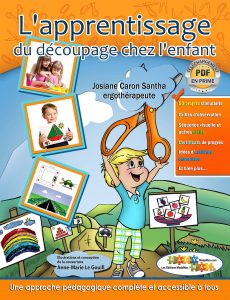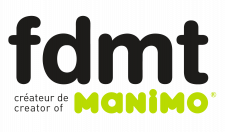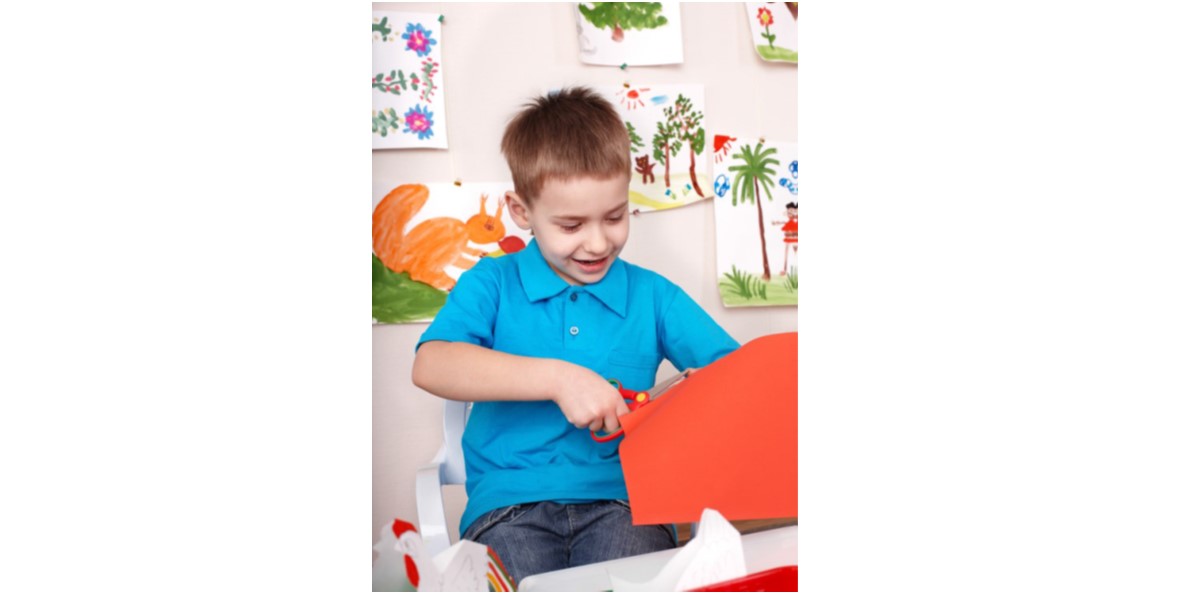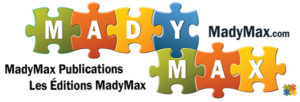Julien is a 4 year old child who prefers physical activities. He has little interest for table activities such as drawing and cutting. Since he does not practice, he is lacking skills in using scissors.
Pénélope, 7 years old, has a developmental disorder. Her motor skill abilities are very limited and her daily activities offer several challenges.
Should we continue to encourage Julien to persist cutting? Shoud we prioritize cutting as a learning objective in Penelope’s already loaded intervention plan?
Learning to use scissors is expected in the early childhood. Cutting is not only an entertaining preschool activity, it has an important role in the fine skills development, the eye-hand coordination and the integration of the two sides of the body (bilateral integration). Mastering the use of scissors gives access to arts and craft activities which open the door to learning how to build, get organized and creativity development.
Fine motor skills : Using scissors helps to strengthen the dominant hand muscles. Particularly stimulating for the thumb control, cutting will help the child to acquire this essential ability to properly grasp a pencil.
Eye-hand coordination : Cutting on a line requires coordination between the eyes focus on the blade and the line and the movement of the hand. While cutting the child develops several prerequisites to other abilities requiring eye-hand coordination such as using zippers, button and unbutton clothes, improve ball games by following the ball with the eyes and catching it.
Bilateral integration : Bilateral integration is the coordination of the two hands while they are doing different tasks : one performs a precision task while the other supports. This ability is at the core of cutting : one hand cuts while the other holds and directs the paper properly. When a child coordinates the two hands, he can easily hold and move a sheet of paper while drawing or writing, coordinate knife and fork to cut food, open containers and lace shoes.
With no particular deficiency, learning to cut starts around 2 years old and progresses until 6-7 years old. Progress in the cutting abilities is a good indicator of the evolution of the child’s motor skills development.
In my opinion, learning to cut with scissors is essential to Julien and Pénélope’s development. If in your situation, the introduction or evolution of cutting does not come as naturally as whished, do not give up the efforts. I suggest looking for tools or professional help. In closing, here are my golden rules to make a learning experience a positive one :
1) Find your child’s key motivation as a start.
2) Offer the right challenge with scissors that can be met successfully by the child on his own!
Josiane Caron Santha, occupational therapist, author «L’APPRENTISSAGE DU DÉCOUPAGE CHEZ L’ENFANT», – Éditions MadyMax.



Leave A Comment